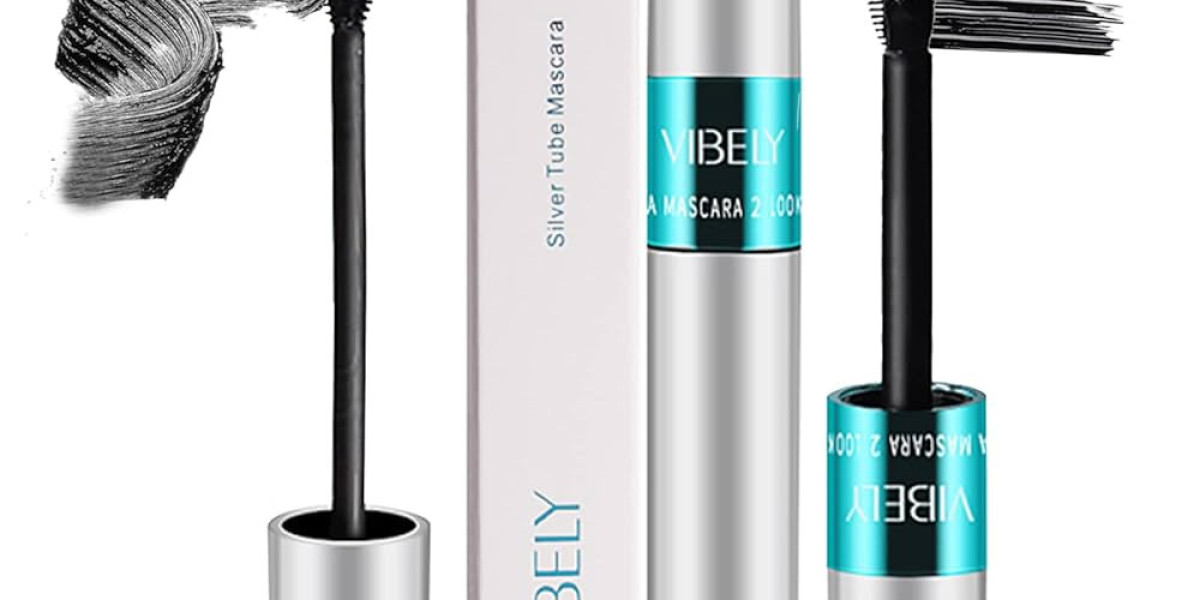Have you ever opened a package only to find that the contents are damaged, spoiled, or worse? It can be frustrating and costly. As businesses strive for quality and customer satisfaction, preventing product failures becomes paramount. One simple solution often overlooked is the humble silica gel desiccant. These small packets packed with moisture-absorbing power play a critical role in protecting your products from environmental damage. Let’s dive into how this little hero helps save your bottom line while ensuring that what arrives at your customers' doorsteps is nothing short of perfect.
Understanding the Function of Silica-Gel Desiccant
Silica-gel desiccant plays a crucial role in moisture control. It’s made from silicon dioxide, a natural compound that can absorb and hold water vapour effectively. By trapping excess humidity, silica-gel helps to create an environment that protects various products from the damaging effects of moisture.
This desiccant works through adsorption rather than absorption. Unlike sponges that soak up liquid, silica-gel captures water molecules on its surface. This process prevents condensation and inhibits mould growth, both of which can lead to product deterioration.
In many industries, maintaining optimal humidity levels is essential for preserving quality and longevity. From electronics to pharmaceuticals, incorporating silica-gel into packaging ensures that products remain safe during storage and transportation. Its versatility makes it invaluable in preventing costly damages caused by unwanted moisture.
The Science Behind Moisture Absorption
Moisture absorption is a fascinating process that plays a crucial role in many industries. Silica-gel desiccant, made from silicon dioxide, is highly effective due to its porous structure. Each granule has an enormous surface area, capable of trapping up to 40% of its weight in water vapour.
The mechanism behind this moisture control lies in adsorption, not absorption. Water molecules cling to the silica's surface rather than being absorbed into it. This allows for efficient moisture regulation without altering the physical state of the silica-gel itself.
As humidity levels rise, these tiny beads spring into action. They attract and hold onto excess moisture from the surrounding environment, creating a dry atmosphere ideal for preserving products sensitive to humidity fluctuations. Understanding this science is key to preventing product failures across various sectors.
Common Causes of Moisture-Related Product Damage
Moisture is a silent enemy that often goes unnoticed until it wreaks havoc. One of the most common causes of moisture-related product damage stems from environmental factors, such as high humidity levels. When products are stored or transported in humid conditions, excess moisture can seep into packaging and lead to degradation.
Another significant culprit is temperature fluctuations. Rapid temperature changes create condensation within sealed containers, which can be disastrous for sensitive items like electronics or pharmaceuticals. This unseen moisture can cause short circuits or affect the chemical stability of medications.
Poor storage practices also contribute to this issue. Items left exposed to damp environments without proper ventilation are at risk. Even seemingly minor spills or leaks during transport can introduce unwanted moisture, compromising product integrity before they reach consumers. Addressing these risks is crucial in safeguarding valuable goods against inevitable moisture damage.
Electronics and the Risk of Condensation
Electronics are particularly vulnerable to moisture damage, especially when it comes to condensation. When devices fluctuate between temperature extremes, humidity can form inside casings. This leads to potential short circuits and other malfunctions that may compromise performance.
Silica-gel desiccant acts as a protective barrier in electronic packaging. By absorbing excess moisture, it significantly reduces the chances of condensation forming within devices like smartphones or laptops. Keeping electronics dry not only safeguards functionality but also extends their lifespan.
Many manufacturers incorporate silica-gel into their product packaging for this very reason. It’s a simple yet effective way to ensure that sensitive components remain safe during shipping and storage. With proper use of silica-gel desiccant, users can enjoy peace of mind knowing their gadgets are protected from moisture damage.
Safeguarding Leather and Textile Goods
Leather and textile goods are treasured items that require special care. Humidity can wreak havoc on these materials, leading to mould growth, discolouration, or even deterioration. Silica-gel desiccant plays a critical role in maintaining the integrity of these products by effectively absorbing excess moisture from the surrounding environment.
When leather absorbs too much humidity, it becomes brittle and loses its natural oils. This can result in cracks and an overall decline in appearance. Textiles face similar threats; dampness promotes mildew development, which can leave unsightly marks or odours. By incorporating silica-gel packets into storage spaces or packaging, you create a protective barrier against moisture.
Using silica-gel desiccants is not just about preservation; it's also about extending the lifespan of your favourite items. Whether it’s a luxurious leather handbag or cherished fabric keepsakes, preventing moisture-related damage ensures they remain beautiful for years to come.
Preventing Corrosion in Metal Components
Corrosion can be a silent killer for metal components, leading to significant failures in products. When moisture is present, it creates an ideal environment for rust and corrosion to thrive. This degradation not only weakens the material but also impacts performance and safety.
Silica-gel desiccant acts as a formidable barrier against humidity. By absorbing excess moisture from enclosed spaces, it minimises the risk of corrosion on metals such as steel and aluminium. Industrial settings often rely on these little packets to protect valuable machinery and tools.
Using silica-gel in storage containers or packaging helps maintain low humidity levels for metal parts during storage and transportation. This proactive approach allows manufacturers and consumers alike to prolong the life of their investments while avoiding costly repairs or replacements down the line.
Role of Silica Gel in Packaging for Long-Distance Shipping
Silica-gel desiccant plays a crucial role in packaging, especially for long-distance shipping. When goods travel across vast distances, they encounter varying climates and humidity levels. The introduction of silica gel packets within the packaging helps absorb excess moisture, safeguarding products from damage.
Moisture can lead to mould growth, corrosion, or degradation of sensitive items. By including silica-gel during shipping preparations, businesses ensure that their products arrive at their destination in pristine condition. This is particularly important for electronics and pharmaceuticals that are highly susceptible to environmental changes.
Additionally, silica-gel packs are lightweight and cost-effective solutions for enhancing product integrity. Their ability to maintain optimal humidity levels makes them an indispensable part of modern packaging strategies aimed at preserving quality throughout the supply chain.
Cost Comparison: Desiccants vs. Product Replacements
Investing in silica-gel desiccant can lead to significant savings compared to replacing damaged products. The cost of a small packet of desiccant is minimal, especially when considering the potential losses from moisture-related failures. When electronics or sensitive items sustain water damage, replacement costs can skyrocket.
The long-term benefits are clear. By using silica-gel during storage and transport, companies can preserve product integrity and reduce return rates due to humidity-related defects. This proactive approach minimises unexpected expenses associated with warranty claims and customer dissatisfaction.
Moreover, industries that rely heavily on delicate goods—like pharmaceuticals or luxury textiles—stand to gain even further. Preventing moisture exposure not only safeguards their investments but also enhances brand reputation by ensuring quality control throughout the supply chain.
Safe Handling and Disposal of Silica-Gel
Silica-gel desiccants are generally safe to handle, but it’s essential to exercise caution. When using silica-gel packets, avoid opening them or consuming the beads inside. Though non-toxic, they can pose a choking hazard, especially for children and pets. Always keep these packets out of reach from little hands and curious paws.
When it comes time to dispose of silica-gel packs, check local waste guidelines first. Many municipalities allow you to toss empty packets in the trash. If you're concerned about environmental impact, consider reusing them instead; they'll continue absorbing moisture effectively.
For larger quantities or bulk silica-gel products, follow the safety data sheets if available. This ensures proper handling and disposal methods that align with regulations. By being mindful of both use and disposal practices, you can enjoy the benefits of silica-gel while maintaining safety in your home or workplace.
Protecting Pharmaceuticals from Humidity Exposure
Pharmaceuticals are sensitive products that require precise storage conditions. Humidity can compromise their effectiveness, leading to possible health risks for patients. By introducing silica-gel desiccant into packaging, manufacturers can greatly reduce moisture levels.
Silica-gel absorbs excess humidity, creating a stable environment for medications. This is crucial for preserving the integrity of both over-the-counter and prescription drugs. It helps maintain potency and ensures that pharmaceuticals perform as intended when consumed.
In addition to protecting drug efficacy, silica-gel also extends shelf life. This benefit not only safeguards public health but also helps reduce waste generated by expired or damaged products. Using desiccants in pharmaceutical packaging is a wise investment in quality control and consumer safety.
Conclusion
Silica gel desiccant plays a critical role in preserving the integrity of various products. By effectively controlling moisture levels, it helps protect against costly damage that can arise from humidity exposure. This simple yet powerful solution is essential across multiple industries. From electronics to pharmaceuticals, its applications are vast and varied. The ability to prevent corrosion, mould growth, and other moisture-related issues makes silica-gel an invaluable asset for manufacturers and consumers alike. Understanding its benefits can lead to more informed choices when it comes to product packaging and preservation. Investing in silica-gel desiccant means prioritising quality and longevity for your goods. As we navigate an increasingly humid world, leveraging this effective tool will ensure that items remain in optimal condition throughout their lifecycle. With a little foresight, businesses can save significantly on replacement costs while enhancing customer satisfaction.
FAQs
What is silica-gel desiccant?
Silica-gel is a granular form of silicon dioxide. It’s highly porous and effectively absorbs moisture from the air, making it ideal for preventing mould, mildew, rust, and other forms of degradation in sensitive items.
How does silica gel work?
When exposed to humid environments, silica gel adsorbs water vapour through its porous structure. This process reduces humidity levels within packaging or storage areas, thereby protecting products from potential damage caused by excess moisture.
Can I reuse silica-gel packets?
Yes! Silica-gel packets can be reused after being dried out. Please place them in an oven at low heat for several hours to remove absorbed moisture before reusing them again.
Are there any safety concerns with using silica-gel?
While generally non-toxic and safe to handle, silica-gels should not be ingested. Always keep them away from children and pets to avoid accidental consumption.
Where can I buy silica-gel desiccants?
You can find silica-gel desiccants at many retailers, both online and in local stores. They come in different sizes based on your needs; whether you require small packets or bulk quantities for larger applications like shipping containers or warehouses.
Related Business Listings |















